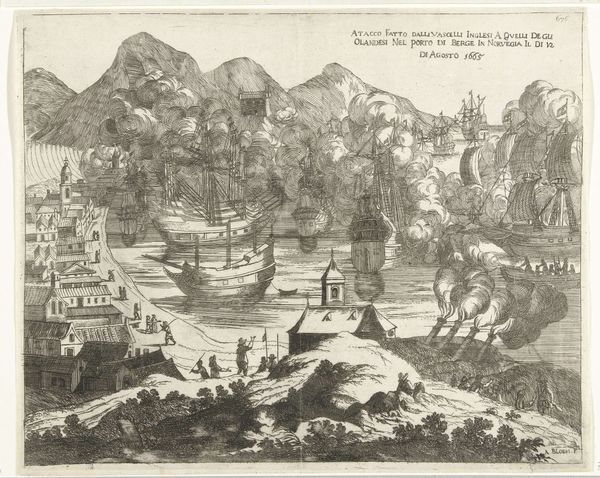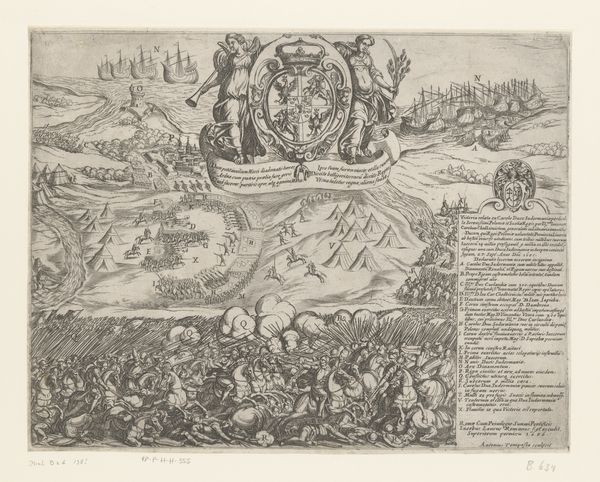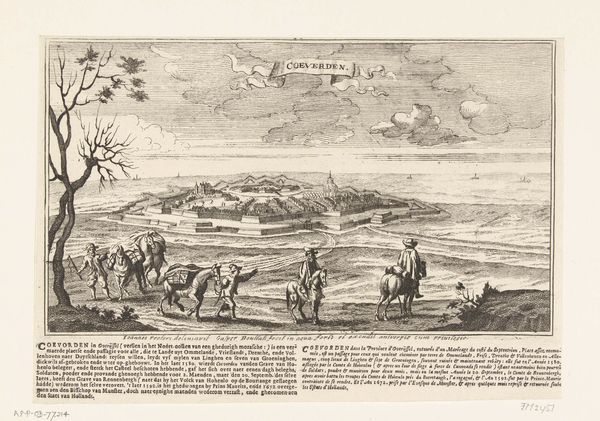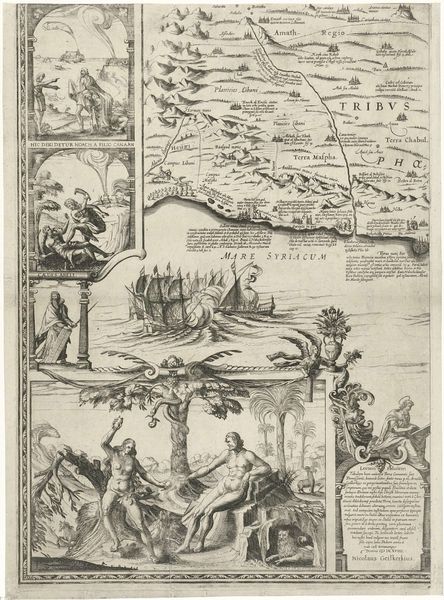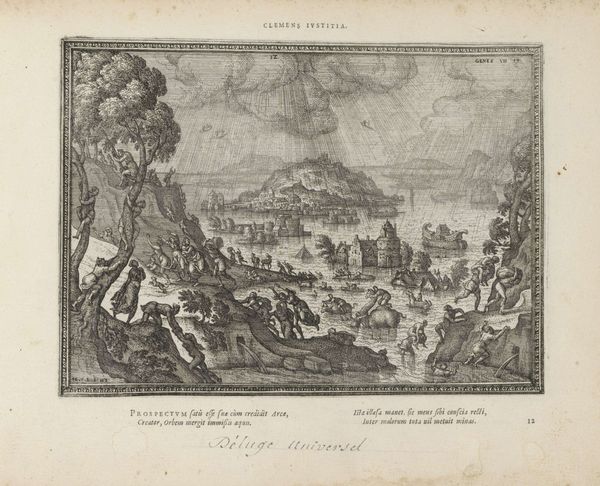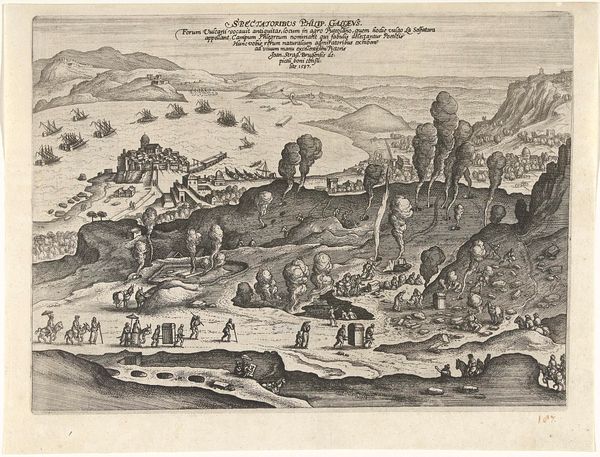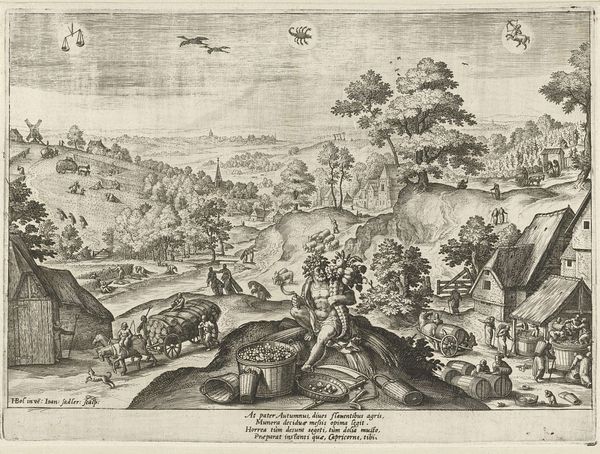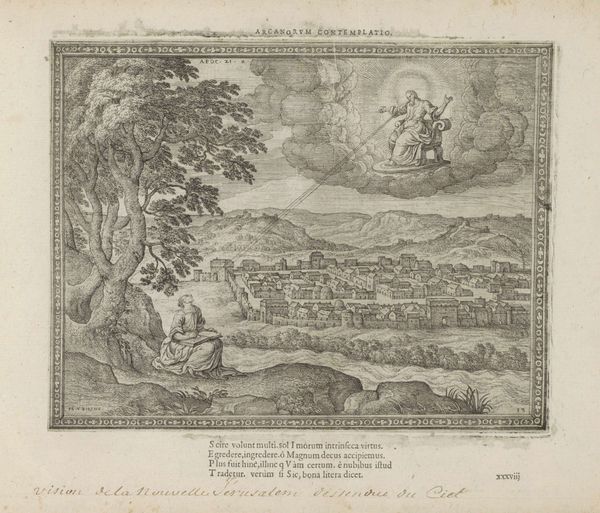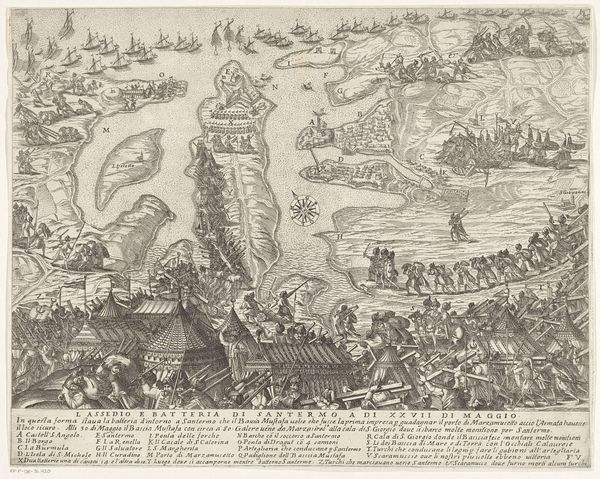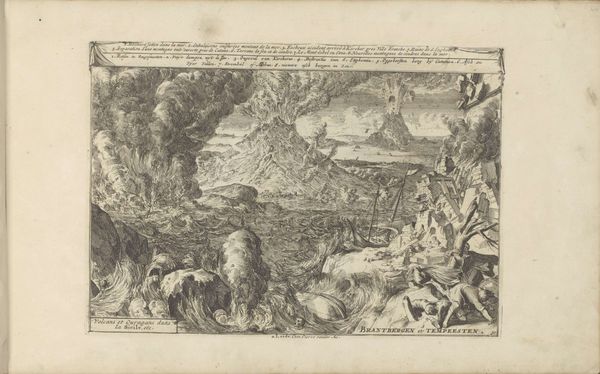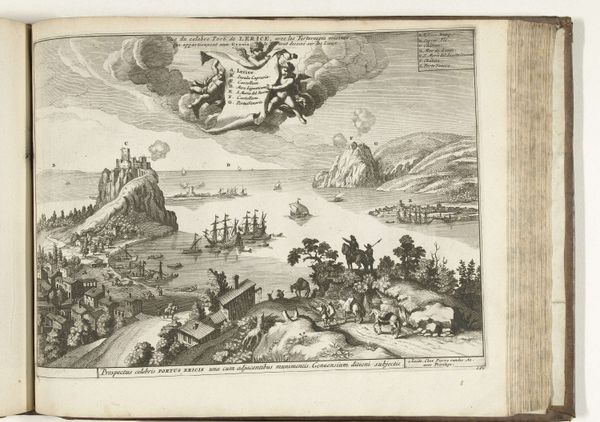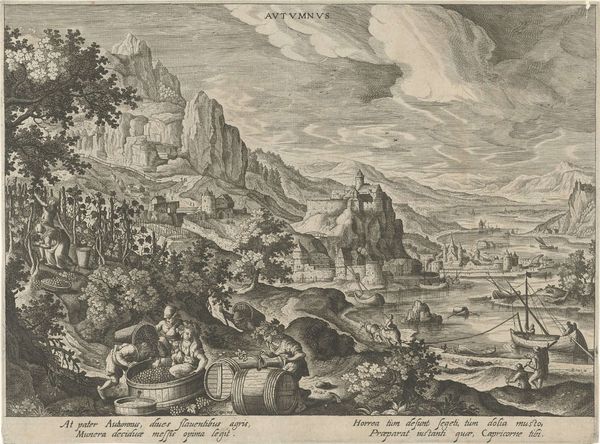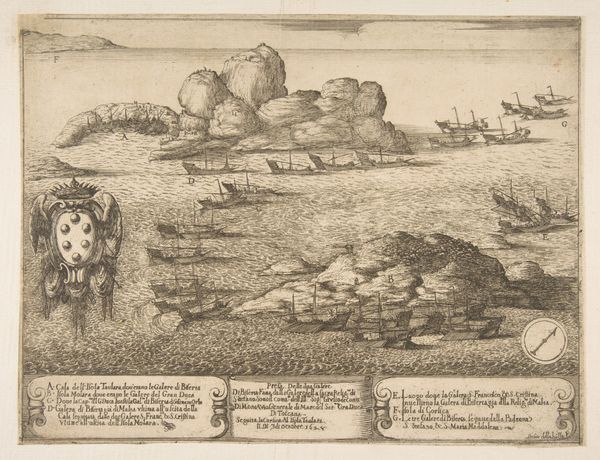
print, engraving
#
baroque
# print
#
landscape
#
cityscape
#
history-painting
#
engraving
Dimensions: plate: 24.7 x 30 cm (9 3/4 x 11 13/16 in.) sheet: 31.7 x 39 cm (12 1/2 x 15 3/8 in.)
Copyright: National Gallery of Art: CC0 1.0
Curator: So, we have before us "The Flutist," an engraving from 1696 by Crescenzio Onofri. It's a seemingly idyllic landscape, teeming with classical motifs. Editor: Yes, it does appear very tranquil. I notice the decaying architecture nestled within the landscape, the figures almost dwarfed by the scene. What strikes you most about this print? Curator: Well, ignoring for the moment any narrative elements, I immediately focus on the means of its production. This is an engraving, a painstaking process of cutting lines into a metal plate to produce this image. Consider the labor involved, the sheer manual dexterity required to render this entire scene. How does that materiality inform our understanding? Editor: That's a very interesting approach. I hadn’t considered that aspect. Curator: It's key! The print medium democratizes art, making it accessible to a wider audience. However, it simultaneously elevates Onofri's skill. Think about the social context. Were these prints sold? Commissioned? What message were they meant to convey, considering this method of production and distribution? Is this an advertisement? Editor: Perhaps it's promoting the virtues of the patron in question. What else about the technique used, helps inform us about the values of that period? Curator: Engraving, due to its replicability, could create a brand or awareness to what the elite did in their every day. It is the very industrial reproducibility that adds significance to how this image conveys wealth through image-making. And notice, no expense was spared here. Editor: I see, so focusing on the 'how' of the art making offers new perspectives about what was being offered. Curator: Precisely. The "how" unlocks deeper understanding and questions around commerce, values and social stature! What are your final thoughts? Editor: That really opened my eyes. The work isn't just about the image but the means by which it came into being! Curator: Indeed, and in turn, this process profoundly affected its reception and impact on 17th-century society.
Comments
No comments
Be the first to comment and join the conversation on the ultimate creative platform.
